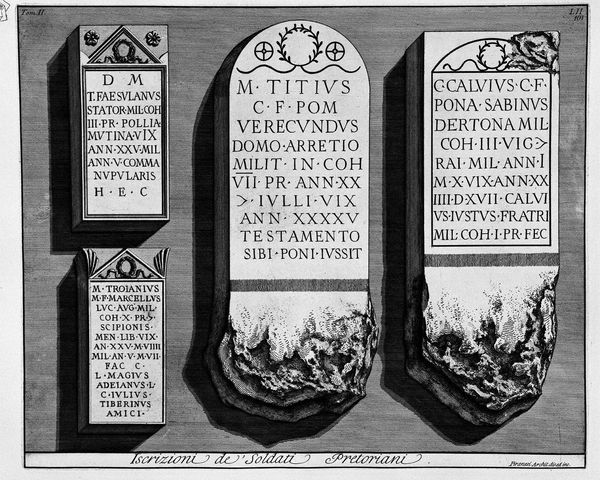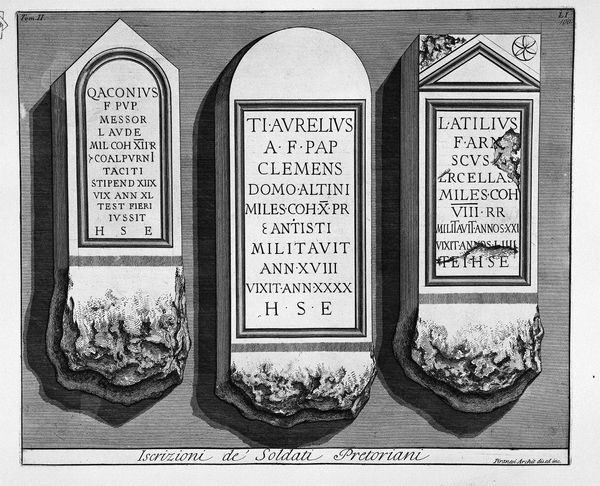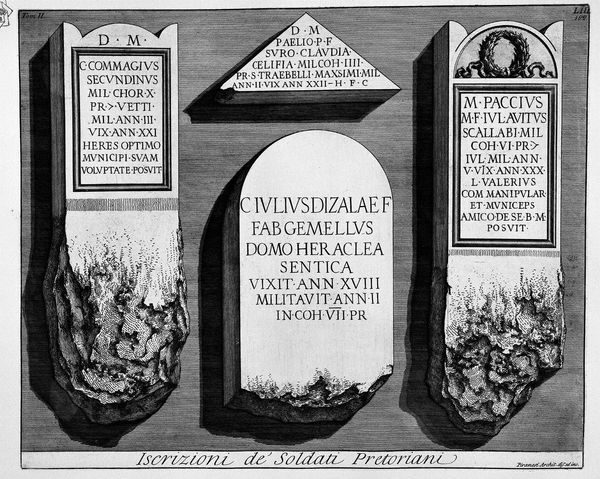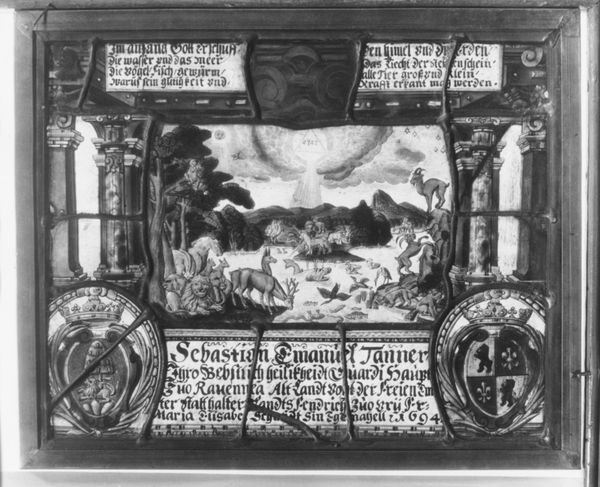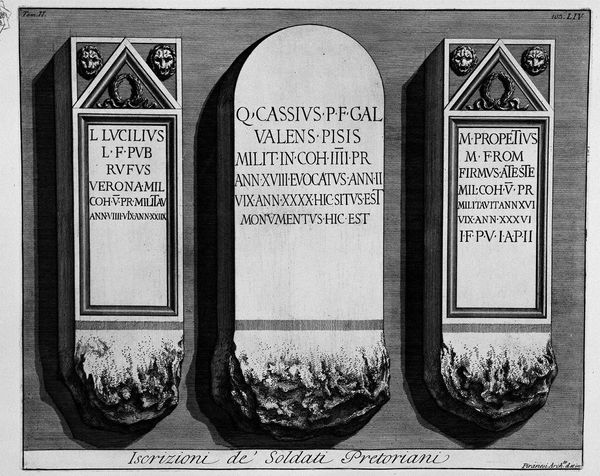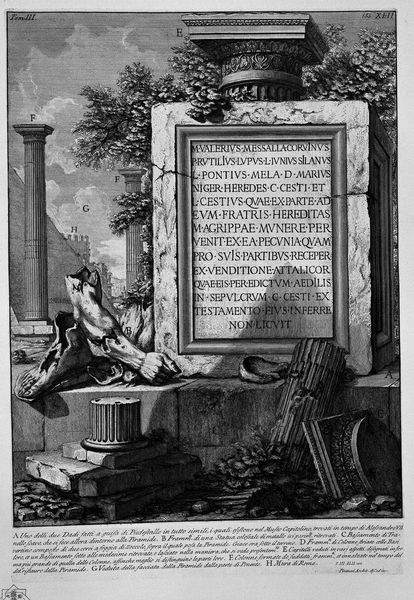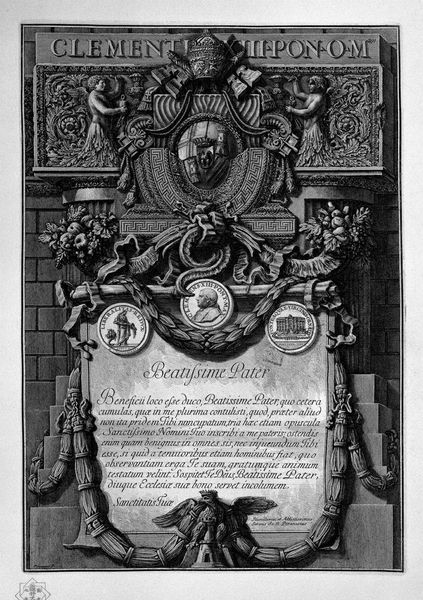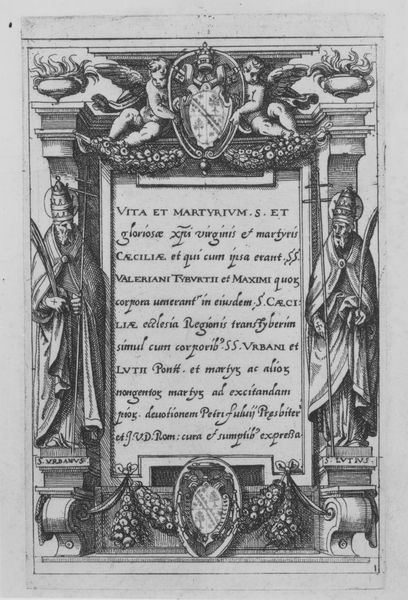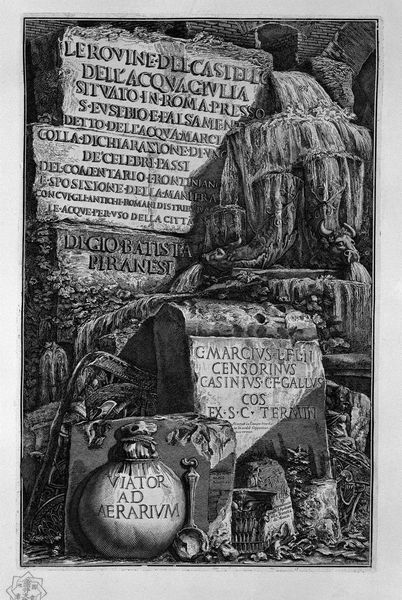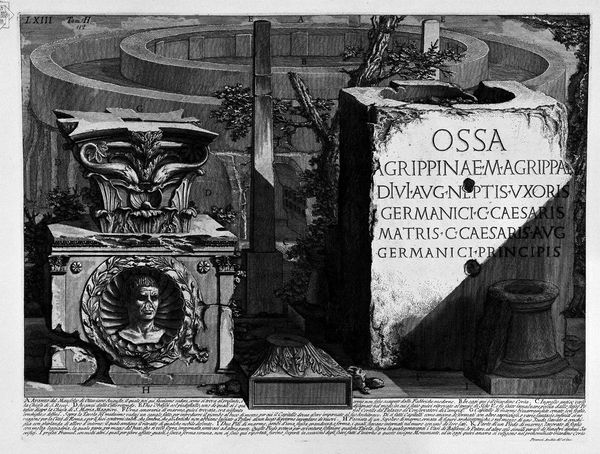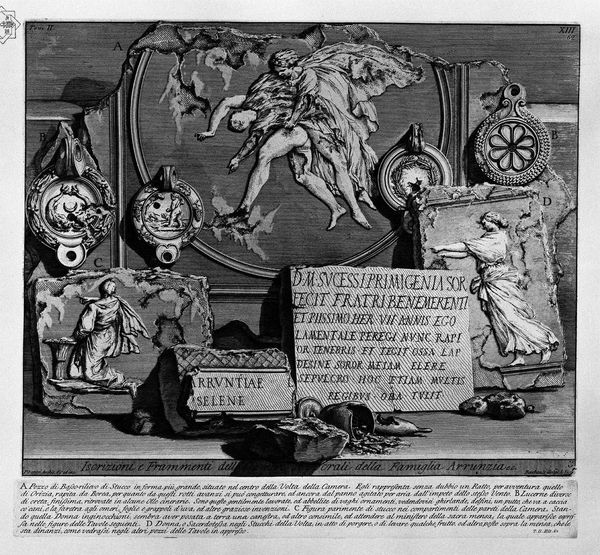
The Roman antiquities, t. 2, Plate L. Inscriptions de `Praetorian soldiers, found in the Villa de `Five.
0:00
0:00
drawing, print, engraving
#
drawing
# print
#
romanesque
#
ancient-mediterranean
#
history-painting
#
engraving
Copyright: Public domain
Curator: Here we have a print by Giovanni Battista Piranesi entitled "The Roman Antiquities, t. 2, Plate L. Inscriptions of Praetorian Soldiers, found in the Villa de Five." It features meticulously rendered engravings of ancient Roman inscriptions. What's your immediate impression? Editor: A sense of fragmentation, of course! These fractured stones, shadowed and isolated on the page, evoke a melancholy mood and emphasize decay and ruination. There is something hauntingly beautiful about this depiction of disintegration, actually. Curator: Absolutely. Piranesi was fascinated by Rome's grandeur but also its fall. This print, like much of his work, highlights Rome's fragmented past. What’s particularly compelling here is the way he presents these inscriptions not just as historical artifacts, but as documents shaped by socio-political life. Editor: Indeed! We can almost hear the artisans hammering away, creating these very tangible records of military service and remembrance. Look closely: the textures he's captured, the uneven surfaces, suggest the hard labor involved in their creation and what endures materially over the ephemera of political powers that commissioned them. Curator: Precisely! The fact that these inscriptions are specifically those of Praetorian soldiers underscores the militaristic culture of ancient Rome and how these men, the emperor's bodyguards, sought to leave their mark, both literally and figuratively, on the Empire through monumental public arts commissioned to mark the end of their lives. Editor: The presentation reminds me of the early industrial revolution where new technologies for documentation sought to record the social realities of the day, to produce visual documents of everyday life with a particular eye for what persists as historical matter and meaning-making. Curator: An interesting point. The act of recording, then replicating and distributing these images allows him to both preserve and comment on Rome's enduring legacy and social hierarchies through reproducible images. Editor: In a sense, yes. Piranesi becomes the artisan here, diligently documenting other artisan's stone-cutting endeavors as he forges an artwork whose enduring power resides as much in its form and circulation, as it does its contents. Curator: So, through Piranesi’s engraving, we see how social and cultural history is materially inscribed, reproduced, and reinterpreted across time. Editor: Exactly! And we appreciate anew the complex processes involved in transforming raw materials into documents of collective experience.
Comments
No comments
Be the first to comment and join the conversation on the ultimate creative platform.
